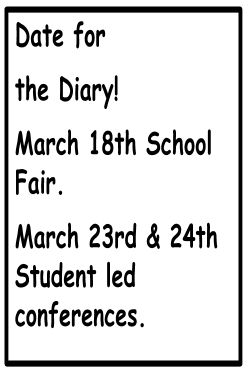Yr1 Weekly Update – 02/17/17
People create homes to suit their needs


Unit
This week we have continued to focus on the structure and purpose of homes and children are learning how to apply their knowledge when creating homes. They have been investigating structures of homes around the world and using their observations to create one using a range of materials. This has been linked with shape and size, so when building homes children need to be mindful of the shapes of the walls, roof, entrance e.t.c.

Suggested activities: Look at how different buildings and their features are structured for size and shape. Talk about how the structure is suited to it’s purpose. Try drawing different structures to reflect the shapes involved.
Questions: What shapes are in the buildings you see? What size is the building? What are the features of this building? Why does it need a door/window/ balcony? What purpose does this building have? What clues does the building give us to it’s purpose?
Phonics and Literacy
In phonics we are looking at using sounding out strategies to spell unit related words. Such as using syllable to split words like win-dow. We are using chunking strategies with long and short vowels like ag or age. We have been experimenting with these chunks to make trash or treasure words such as dage or page/ bag or pag. During Literacy we are looking at strategies we can use to help us identify if texts are story texts or informational texts. This includes making observations about the type of pictures in the book, are they photos, detailed illustrations or imaginary illustrations. We have begun looking at the sentence structures used when giving information, such as A home has…, A home is for…, A home needs….
Suggested activities: Read with your child an informational text and a story text and find similarities and differences in the texts. Look at the illustrations if both texts and talk about how and why they are different.
Questions:What type of picture has the text used? Is this a real illustration or an imaginary one? What can you learn from the picture? How do the pictures and words match?
Maths
We are continuing to explore the concept of shape and look at the form and function of shapes. The form explores how shapes are different from each other by lines, corners and faces. The function is to see how shapes are used in home structures, buildings and our environment. In number we are looking at multiple strategies for addition and subtraction. This can involve counting forwards or backwards on a number line, partitioning where children explore the combinations of amounts to get to the same number, such as 4+4, 2+6, 1+7 all equal 8. Also learning number doubles such as 2+2, 2+2+2, 2+2+2+2.
Suggested activities: Solve practical addition and subtraction facts at home. There are 6 people for dinner and only four plates on the table, ‘ How many more plates do I need?’. Start to count in number patterns like 2’s, 5’s and 10’s. Show how these number patterns help us add such as 10 + 10 is 20 when I count two tens.
Questions: Would I add or takeaway to solve this problem? How many do I need to take away/add? Does the number need to get less or more? What would help me solve this problem, using my fingers, counting blocks, using a number line e.t.c



